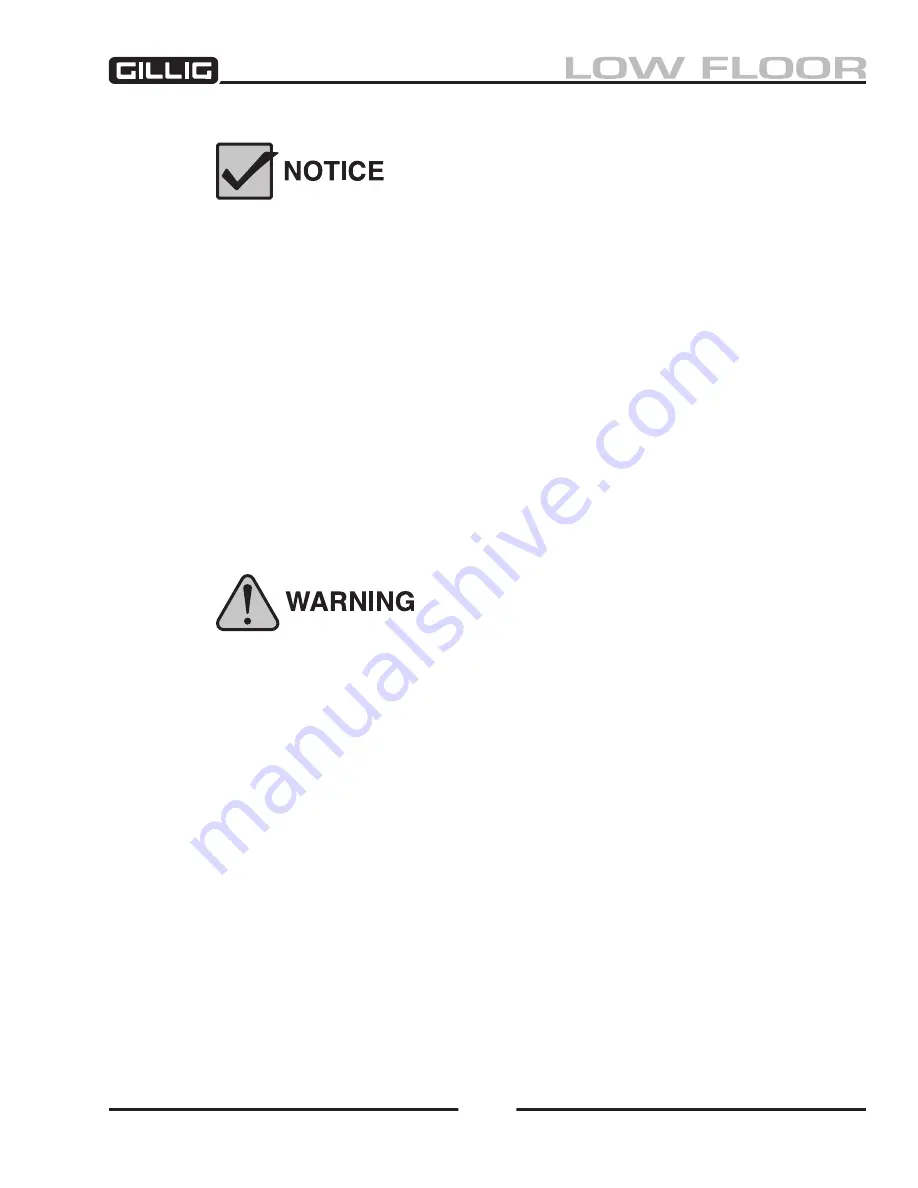
Brakes & Wheels
267
PARKING BRAKE
Parking brakes are applied when air pressure is
released
. Air pressure
is
required
to release the parking brakes.
The parking brake is actuated when compressed air is released (or dumped) from the parking brake half
of the rear brake chambers. Spring pressure will hold the brake engaged. The piggyback air chambers in
the rear brake assembly are dual chambers that provide separate braking from the parking and rear ser-
vice brakes. The parking brake is controlled by the parking brake valve mounted in the driver’s console.
To release the parking brake, air pressure is required to compress the spring and disengage the brake.
Disabling the Parking Brake
If it is necessary to tow the vehicle after the parking brakes have been activated and there is no air pres-
sure, follow the procedures in the following brake chambers section entitled, “Spring Brake Manual
Release.” Do not attempt to disassemble the parking (spring) brake section of the piggyback brake
chamber; observe all the warnings, cautions and notices provided in the brake chamber section.
BRAKE CHAMBERS
The spring brake section of the “combination” rear brake chambers
contains springs that are under extreme, lethal pressure. There are no
user-serviceable parts inside the spring brake chamber. Never attempt to
disassemble the spring brake chamber as serious personal injury could
result from accidental sudden release of the high energy spring.
The brake system uses two different types of brake chambers for the front and rear axles. The front
brake chambers control the front service brakes only. The rear brake chambers are “combination” cham
-
bers which apply both the parking (spring) and rear service brakes. Unlike the service brakes, the spring
brakes are actuated when air evacuates from the spring brake chamber. (Parking brakes are referred to
as “Spring” brakes because of the high pressure springs which operate the mechanism.) If air pressure
in the air system falls below 80 psi due to a malfunction, the spring brakes apply automatically. Since
the service brake section and spring brake section are isolated from each other by seals, the spring brake
cannot interfere with the operation of the normal service brake.
Valves in the air system control the flow of air pressure, which enables the coach to come to a stop when
applying the brake pedal. These valves are discussed in the “Brake Valves” section in this chapter.
Summary of Contents for LOW FLOOR
Page 18: ...Specifications 18...
Page 58: ...Preventive Maintenance 58...
Page 110: ...Engine 110...
Page 138: ...Transmission Driveline Rear Axle 138...
Page 182: ...Suspension 182...
Page 260: ...Air System 260...
Page 420: ...Electrical System 420 Deutsch DT Series Connectors...
Page 421: ...Electrical System 421...
Page 422: ...Electrical System 422 Deutsch HD 10 Series Connectors...
Page 423: ...Electrical System 423...
Page 424: ...Electrical System 424 Deutsch HD 30 Series Connectors...
Page 425: ...Electrical System 425...
Page 442: ...Heating Air Conditioning 442...
Page 492: ...Body and Interior 492 Figure 11 33 USSC Seat Assembly...
Page 493: ...Body and Interior 493 Figure 11 34 USSC Seat Suspension Assembly...
Page 495: ...Body and Interior 495 Figure 11 37 Seat Air Connections...

































